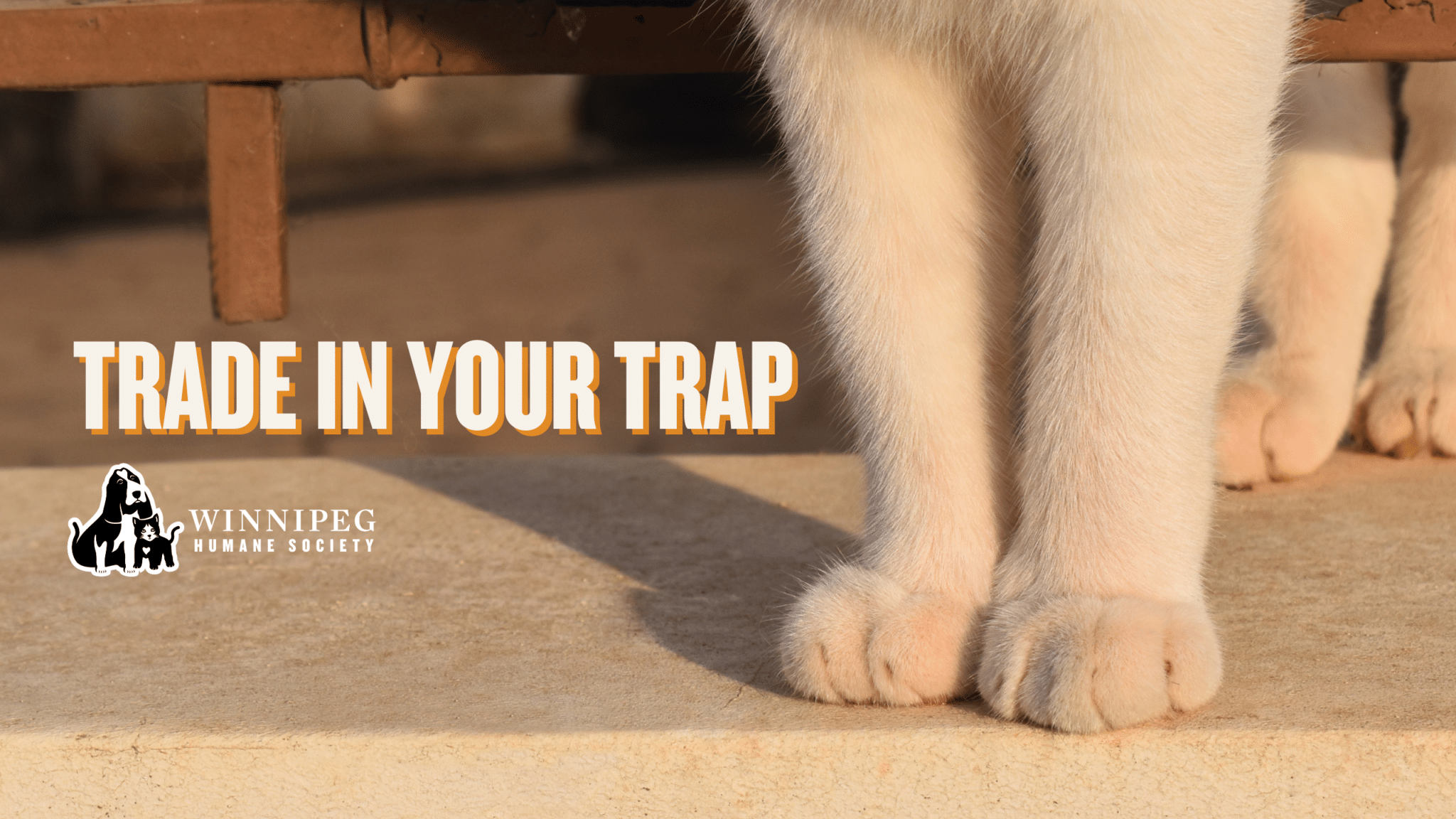
Trade in Your Trap

The Winnipeg Humane Society (WHS) is launching the Trade in Your Trap campaign, which urges people to turn in their lethal animal traps to the WHS to prevent injuries and deaths of not only wildlife but non-target victims such as dogs and cats.
Winslow, a two-year-old cat, was brought to the shelter’s clinic with severe injuries after being caught in an illegal trap in a Winnipeg neighbourhood. He is recovering well, but for others, the outcome has been fatal.
“Traps don’t discriminate. They show no mercy to wildlife or beloved pets. All animals suffer immensely when they fall victim to traps,” says Jessica Miller, CEO of the WHS, adding many animals are caught up in traps that have been long forgotten after they’ve been placed. “We encourage the public if they come across an illegal trap to contact 311. To ensure the safety of both animals and people, we also continue to advocate for clear and visible signage anywhere new traps are being set outside the city.”
Traps being accepted as part of the campaign include body grip/conibear traps – which are illegal within Winnipeg – leghold traps, snares, and other makeshift lethal traps. To incentivize trade-ins, the WHS is offering a chance to win a $200 gift card to the shelter’s pet shop.
While snap and glue traps are not part of the campaign, the WHS still classifies these as inhumane and recommends people utilize alternatives, such as properly monitored, live-release traps, for managing species classified as pests.
Traps can be dropped off at the WHS Pet Shop (45 Hurst Way) from March 27 to April 10.

